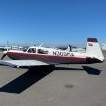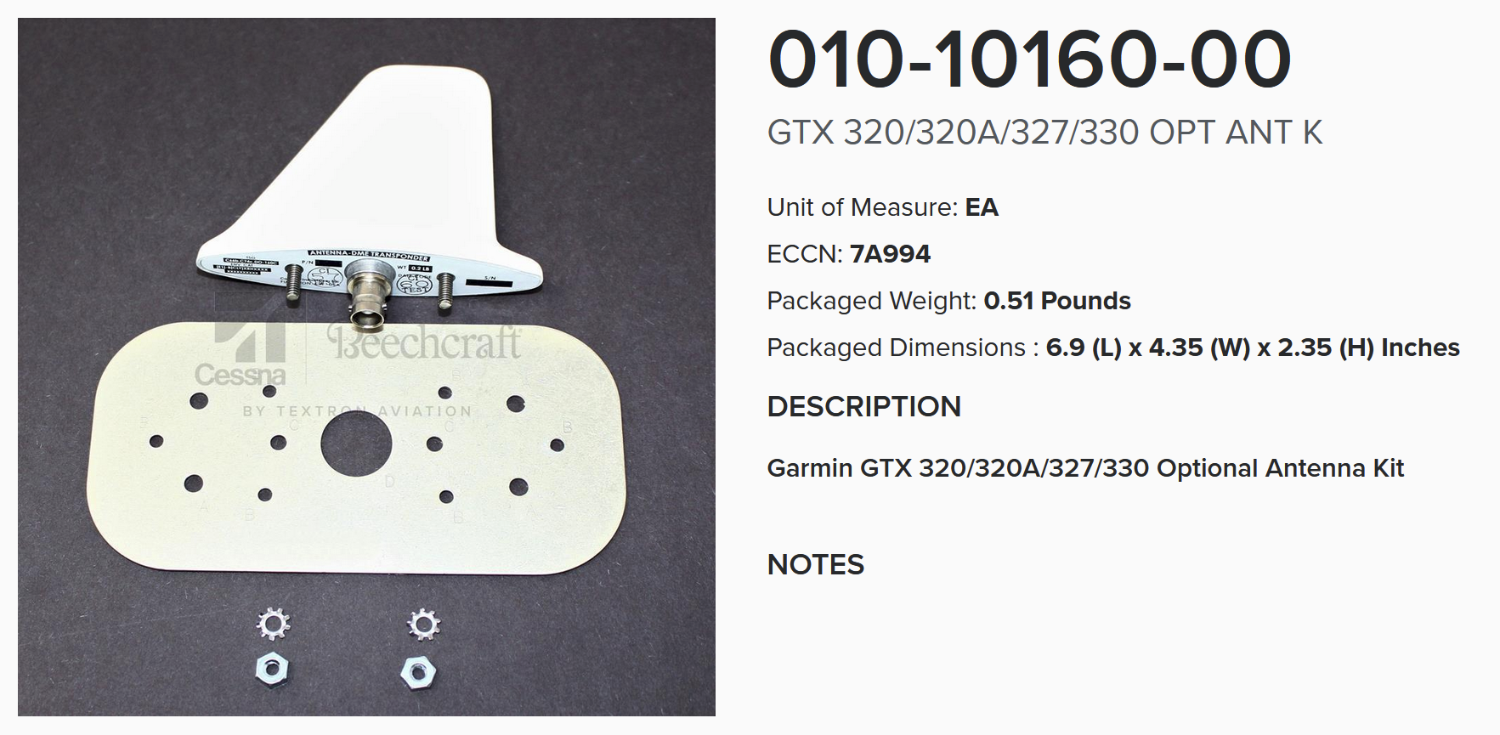-
Posts
1,383 -
Joined
-
Last visited
-
Days Won
10
Marc_B last won the day on February 9
Marc_B had the most liked content!
About Marc_B
- Currently Viewing Forums Index
Profile Information
-
Gender
Male
-
Reg #
8MA
-
Model
M20K Encore
-
Base
KGXY
Recent Profile Visitors
11,108 profile views
Marc_B's Achievements
-
https://inspire.eaa.org/2025/11/20/1925-national-air-reliability-tour-100th-anniversary-commemorative-mooney-edition/ I wrote up our recreation of the 1925 Air Reliability Tour for EAA. Fun trip and great to see so many new places! We had great weather, no mechanicals, caught a Cubs game ("In Chicago what do you say? Cubs are going to win today!"). We started and finished at KMKC Charles Wheeler Downtown in Kansas City...this is an all time favorite airport of mine. Love to come in landing south, come in from the west and ATC directs you right over the top of KMCI at 4000', then turns you south for an extended final for Rwy 19 with great views of the city the entire way! Free parking at City Park tie downs, and usually decently priced self fuel. What's not to like?!? The Mooney has had a BUSY last couple of months!! Already time for another oil change! As a side note, KBKL Burke Lakefront in Cleveland, OH right off of Lake Eerie is a new favorite! Unfortunately there are pressures trying to close the airport. Reminds me of what Mayor Daley did in Chicago with Meigs Field in 2003. https://www.aopa.org/news-and-media/all-news/2025/november/20/aopa-joins-ohio-coalition-supporting-burke-lakefront-airport
-
Personally I don’t like keeping tow bar attached when not in use. I understand why some do it, and tow bar used as a chock seems okay. But my habit is when the tow bar is on it’s in my hand and when not in my hand it’s off will save a LOT of damage. It’s happened to a local pilot. I also have the habit of putting my tow bar, cowl plugs and pitot cover in the back where the pilot can see them. I’ve looked over my shoulder to verify them more than once. Reassuring to see them before the key goes in the ignition. ** the above are my habits and not trying to convince anyone else what they should or shouldn’t be doing.
-

Transponder antenna replacement questions
Marc_B replied to LANCECASPER's topic in Avionics/Panel Discussion
I had my transponder antenna go out and both Garmin and my shop thought it's "usually not the antenna" but it was. Fortunately I had an orphaned antenna beside it on the belly maybe from DME previously? Switched it and moved on. But the Garmin antenna shows an "optional antenna kit" which looks like just a grounding plane and mounting hardware. FWIW, my antenna did have a ground plane but didn't have any sealant/RTV. -

Minimum Cloud Ceiling to Launch VFR for Aerial IFR Pick Up (poll)
Marc_B replied to 201er's topic in General Mooney Talk
For me this is a very unclear poll question. If I'm departing VFR, I'm doing so expecting to maintain VFR. If I have a ceiling that I need to punch through then I depart on an instrument flight plan. BUT, I've departed VFR with an IFR flight plan filed in case I needed it in the air depending on my destination. But in that case I'm expecting VFR and will continue to fly VFR with flight following unless I need instrument flight plan. I've also picked up pop up IFR in those cases as well when the weather unexpectedly changed requiring IFR plan but still safe to complete. Departing VFR only to scud run while trying to pick up an IFR plan seems like a rather horrible idea...if you're instrument rated, why would you think that's a good idea? If you're not instrument rated, the stats speak for themselves...VFR flight into IMC is one of the leading aviation killers. -
Another shop that does solid work is Aircraft Magneto Services in Montana. https://www.aircraftmagnetoservice.net/ Easy to print out a prepaid mailer from their website, fill out a service order, and ship in. They typically have their turn around times listed on the website. They also have an AOG service for a quicker turn that adds a couple hundred but takes you to the front of the line.
-
Just to add one more data point...I have verizon for phone service, and when I turn off wifi (use cellular) I get "Safari can't open the page because the server can't be found." But when I'm using home wifi, then Mooneyspace works properly.
-
@Jamildmc Did you check BAS/Beegles in Greeley, CO? (not sure what engine you have and if this is the right part??? https://baspartsales.com/492110-2-alt-649012-garrett-intercooler-assembly/) Check out the Continental Illustrated Parts Catalog for your engine, determine the part number...you can also start calling distributors...i.e. AirPower.
-
Chasing storms yesterday from Austin to Florida. Wound up stopping in New Orleans and Tallahassee cause the Mooney was moving faster than the front! Alaska and a couple other commercial aircraft were landing at TLH to go to Million Air as they were having a sale on fuel…plus wx to Tampa and Orlando was blocked. Florida Flow Control I’ll bet was lit yesterday. ”If you have time to spare go by air” indeed. 10a arrival turned to a 7p arrival, but my ride was smooth and the Mooney stayed dry. Modern weather tools are really pretty incredible. PS. KNEW is a fav…first rate FBO (Flightline First), good fuel prices and fun airport to fly into right on Lake Pontchartrain. Put it on your list if you’re in the area and give yourself an excuse to check out NOLA
-
I put these squarely in a volume available vs customer demand category. Same as V-band clamps. Prices rose cause they could. But as fewer and fewer resources are put towards GA, the number of these items and prices will continue to rise.
-

Let's buy Mooney - Crowdsourced Version - Straw dog.
Marc_B replied to Yetti's topic in General Mooney Talk
Engine: TCM/Lycoming Prop: Hartzell/McCauley/MT Lights: Whelen Avionics: Garmin/King/Avidyne/etc. Big ticket items are taken already. If not building complete aircraft, then it's probably mostly corrosion related issues, replacement skins, cowls, hangar rash, belly ups. That and taking all the aftermarket parts from other vendors used on our aircraft and "certifying them Mooney." Between McFarland, Univair, and Spruce many common parts don't come from Mooney. Lots of parts are purchased salvage from companies like BAS/Beegles. Even within Mooney owners, the parts aren't purchased with much/enough volume from Mooney itself. I think it's problematic to expect the Mooney fleet left to support a company all by themself...Mooney, LASAR, or otherwise...just on parts alone. The more prices become over inflated, the more inventive the owners will be to avoid purchasing those parts. LASAR established themselves with upgrade kits and direct to consumer sales in addition to a Mooney maintenance facility. By being able to use the Mooney name to act as the middle man for all the outside manufacturers that don't sell direct to consumer they can help themselves as well as all of us. But it's a delicate balance of pricing so that parts actually get sold with enough volume to make it worth while...at a certain price this becomes a one off vs volumes that support profit from volume rather than solely on individual items. i.e. how many people would buy a no back spring at $2500-3000 unless absolutely unavoidable...vs how many would they sell if they sold them for $300 and lots would buy them to have one just in case??? Mooney has production capacity for an older way of manufacturing parts, for aircraft that are no longer being made. But it's a lot of overhead to run the shop even bare bones. At some point the old Mooney has to be retired to give birth to the new Mooney of the future. For those saying if everyone just gave "X" amount...what are you wanting that to "build"?? It's unlikely to bring back manufacturing of Mooney Aircraft as they were. There's too much overhead to support Mooney as they have existed lately... My suggestion to LASAR is to bolster upgrade kit availability, bolster common wear items on our Mooneys, develop cooperative ways for fellow MSC's to coordinate orders, see backlogs, and coordinate "group-buys" between shops, and continue to offer parts to consumers and other shops that aren't MCSs. But the idea of an owner/investor NEEDS to have a return on investment other that just a "hope" that this might bring better support to a shrinking field. -
It'd be the PERFECT solution if it was $100! But it does work well and no regrets for me so far.
-
I had a ceramic heater that was cheap and way too much wattage...finally ponied up for the Tanis cabin heat and it's the right tool for the job except for cost. Perfect output, low profile, and most importantly, low wattage that doesn't trip my Switcheon cellular switch. Only downside was aviation pricing...and yikes, just looked and they went up by another $150 from when I purchased it from Gallagher back in 2021...just silly pricing, I don't get it. Lasko 1500W ceramic heater...what I first bought from Amazon... Tanis 500W heater...which is what I eventually broke down and bought from Gallagher It's super nice to have a toasty cabin and the seats plush when I get in. If its cold the seats are hard as a rock until they warm up. All you need is an hour or two and the entire interior is heat soaked and amazing!
-
@Fly Boomer I was trialing a new way to snake the power cord for my cabin preheater... ...it's a large sponge that "almost fits perfectly" with cutting a slot in the front edge to slot the windo into...but the front lower corner of the pilot window is just big enough to get a seal I need to use a small piece of microfiber cloth folded up... (7.5" x 4.3" x 2") --> looks like Home Depot has a grout sponge that's 7.5" x 5.5"...gonna pick one up this morning and see if that works. Previously I had the cord going out the back of the baggage door, but that meant keeping the door cracked or really compressing my door seal. Now if I could fashion a plug in on the back baggage wall and a connection like my battery minder...that would be slick.
-
Got the D-rings and toiletry bag in the mail today. Easily slid the D-rings (pictured in a post above) through the head rest posts. The toiletry bag was perfect size for 2 Mountain High Mic Masks (with all connections/tubing/mic cords), an extra nasal cannula, and a small pack of CPAP mask wipes slid into one of the upper pockets. Used a tan zip bag for the pocket that is about 3/4 size of a gallon ziploc and fits perfectly in the back pocket with 2 boom cannulas and the regulator for the O2D2; those always stay up front in seat back and easily accessible. But the "toiletry bag" easily stays in the hat rack but with long trips or anticipated flight level flying I'll just use the hook and loop tabs to hang the bag from the seat...out of the way but easily accessible. Wound up getting the 3 pack of zip pouches so the smaller one easily fit several Travel Johns to keep them close at hand but together and "concealed." Toiletry bag $19. D-ring key clip $7 Zip pouch $15
-
@1980Mooney From the Lord drawings the J7444 snubbers are all the same thickness, but different center receptacles. However, I'm not sure if the material used is the same. Lord said that they haven't produced the -34 part since 2008 and sold the last batch to Mooney at that time. Specifically the -34 part was listed with "chlorobutyl" and the others were just listed as "rubber". Not sure if this translates into a different material or durometer or not??? I'm not sure what material the Skybolt equivalents use. I presume the thickness is the same??










